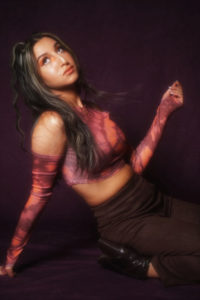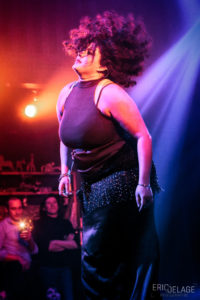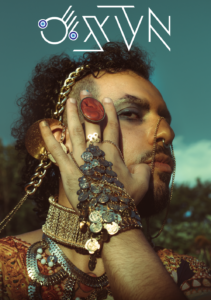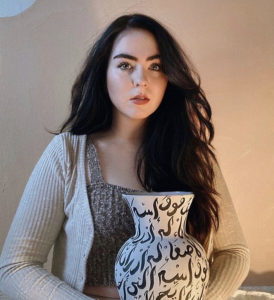What does it mean for art to be described as Arab or SWANA (South West Asian North African)? Scholars and popular culture alike often alternate between the usage of terms such as Islamic or Arab. This is done so with little definition or care, implicitly equating ethnicity, faith, and identity as one amorphous and often exotic whole. More often than not art described in either of these ways also bears the additional unfair burden or requiring the embrace or connection to the “traditional” so that it can be authentic. This needs to embrace classical and historical forms over contemporary, experimental, or hybrid reifies many of the worst tropes leveled at Arab and SWANA culture. It also relegates Arab art to crafts and architecture while painting, fashion, music, and other artistic forms or held firmly within the western tradition, disregarding more than a thousand years of influence and exchange.

This past June, Al-Bustan had these issues very much in mind as it launched its 5th art exhibit since it made the move in 2019 to its new location, The Hub, at 36th and Lancaster. Emerging from the COVID-19 pandemic Al-Bustan’s Director of Education and Civic Engagement David Heayn-Menendez co-curated a show with Tamara Hijazi, a Chicago based up and coming Arab American photographer. The exhibit, titled ARTist Reframed was comprised of commissioned photographic portraiture and video produced by Tamara and featuring 13 emerging SWANA artists whose varied stories and artistic mediums captured only a small snapshot of the diverse artistic expression, experience, and identity of SWANA artists in America today.
On June 18th nearly 2 years of work from conceptualization to installation culminated in a festive gallery opening at The Hub with more than 140 community members, artists, and arts administrators. Gathering together after such a long

quarantine, as a creative community, the attendees represented various age groups, sexual and gender identities, ethnicities and races. The audience reflected the variety of artists featured. Venezuelan-Moroccan-American composter and vocalist Miriam Elhajli performed a melodic and enamoring set of live acoustic songs for attendees who gathered outside The Hub. Others were captured by the video interviews and performances edited by Tamara of her time with each artist which was playing in our multimedia hub space. In addition to Tamara’s valued presence at the exhibit and Miriam’s amazing performance, several of the featured artist made came to the opening to show their support including Brooklyn based Syrian-American writer, director Karina Dandashi, Chicago based Iraqi-born Assyrian-American actor, writer Martin Zebari, Chicago based Egyptian-American writer and director Lena Elmeligy, Chicago based Egyptian nonbinary multidisciplinary sound artist NAXÖ , Pennsylvania based vocalist Fajjr Khan, New York-Based North African performance/teaching artist Esraa Warda, Philadelphia based Cuban/Egyptian muralist, street artist Symone Salib.

The featured artists were consciously chosen from across the Mid-Atlantic and the Great Lakes regions with the intention to elevate the work of these incredibly talented SWANA artists who are building their careers and making an impact in the art world in their region and beyond. The photographs of each artist were taken at locations, in a context, and in a way which they and Tamara felt best represented them, who they are, and how they want to be seen. This allowed each portrait to take on much of the beautifully unique flavor of each artist and their personalities. Tamara skillful conveyed this through the use of color, lighting, poses, and the comfort she engendered during shooting with each artist. In addition to the photographs and video on display in the exhibit, Tamara and Al-Bustan staff produced a zine featuring additional photographs and segments of the interviews. The zines quickly sold out but Al-Bustan has printed more which, along with the original prints, are for sale on our online store.

After the exhibit came to an end, attendees and Al-Bustan staff attended a catered party at Renata’s Kitchen, a Palestinian restaurant and event space on Baltimore Avenue. NAXÖ performed as the DJ for the evening as artists and attendees mingled, danced, and even broke into an impromptu outdoor Latinx-Maghrebi folk music sing along until 2am. The sense of community and support, of creativity and collaboration was everywhere. This exhibit is only the beginning of the ambitious new directions Al-Bustan hopes to serve the Arab, SWANA, and broader community while elevating and amplifying SWANA art and artists.


